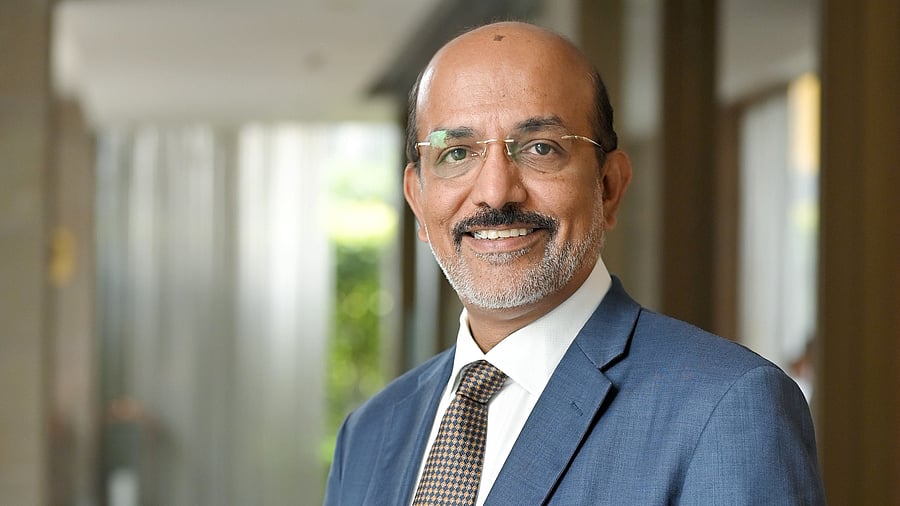
Bengaluru: With fast-changing trade lines and manufacturers globally in a supply chain-diversifying marathon, logistics companies have been witnessing global shifts. One of these shifts is a global movement towards India, says RS Subramanian, senior vice president, South Asia - DHL Express, in a conversation with DH’s Anushree Pratap. The Germany-headquartered logistics major DHL Express, a subsidiary of the DHL Group, plans a lot of investments into India, the most recent being a Rs 34 crore service centre at the Kempegowda International Airport in Bengaluru spanning 17,900 square feet. Edited excerpts:
With trade lanes changing globally, have there been challenges to your international operations?
International trade patterns are changing all the time. In the last year or two, especially post-Covid, all the global manufacturing and brand players have been focusing on supply chain resilience and not being dependent on single-origin manufacturing, so that they have the reliability needed to service their demand. To that extent, a lot of our customers are diversifying their manufacturing and India is a beneficiary. There’s some amount of manufacturing moving out of China and some amount of manufacturing which has always been moving out of western countries towards countries like India because of the cost advantages and the domestic demand that India has. In the last year or so, you can also point to global geopolitical tensions, wars and tariff regime changes. All of them have an influence on how the trade flows, in what direction it is flowing, and which sectors it is affecting. None of these changes are easy; they all have a gestation period. But there is a positive movement which is happening towards India, which is good.
Are shipments getting interrupted due to geopolitical shifts?
There is interruption all the time. For a few days, some countries are closed because there is a situation there and then within a few days, it gets opened. There have been some disruptions in the last month or two but we are on top of it.
Which sectors are currently driving growth in India?
Traditionally, for the express business in India, fashion garments is one big sector. India is also a pharmaceutical hub for the world. Life sciences and healthcare is a huge sector for the country. Engineering and manufacturing with the added push from the government on local manufacturing and bringing global value chains into the country is a very happening space. Since the start of PLI (production linked incentive), tech has been a booming sector. Telecom, mobile manufacturing in the country, laptops and now semiconductor manufacturing, is a big theme for the next decade. Aerospace, aviation is a big sector because India is a massive consumption market and along with that, there is significant investment from the government in building capacity. Because there is such consumption in the country, most aviation players want to manufacture here and therefore the configuration of their supply chains are changing; we are working with a lot of them to help keep things moving.
Which sectors does DHL expect the most growth in globally going forward?
One is life sciences and healthcare, including medical devices, because there are so many different formats of treatment emerging and research going on. Patient care delivery formats are changing globally and we think there will be increasing sophistication in terms of the logistics support needed for those healthcare treatment plans to be delivered. The second global theme is alternative sources of energy which is solar or windmill or hydro and along with that, the increasing footprint of electric vehicles, all of which use batteries. Battery logistics itself is a complex and sensitive logistics area as it includes battery storage, replacement, delivery to customers, and distribution of charging networks. Over the last decade, e-commerce is the fastest growing sector across the global network for DHL and we think it will continue to be a fast-growing sector in the next decade also. With changing customer behaviour and demand from logistics service providers, the digital interface with the customer needs significant revamp and a lot of technology revolution will happen there. So we’ve also taken digital sales as a key focus area for the global network.
DHL also found via analysis of our last decade of performance that there are 20 countries which demonstrate significantly faster growth than the rest of the 200 countries we are present in. India is one of the top geographic tailwind countries for DHL and therefore DHL’s presence in the country is a significant focus point for the group. We’ll see a lot of investment in India to drive growth.
DHL has sought simplification of taxation on aviation turbine fuel (ATF). What other asks does the industry have from the government?
The rationalisation of ATF is something which the industry has been asking the government for a long time. Outside of that, we ask for public infrastructure like airports and cargo handling capacity to have the right capacity, efficiency and future-ready condition. Hard infrastructure will take time but the enabling processes and simplification of regulations will improve ease for people. Bringing in further digitalisation and less paperwork and making the processes more efficient for the customer without losing the compliances and controls which the government wants is the big challenge.
What is your revenue growth from India in the financial year 2025?
Our CAGR (compound annual growth rate) in India over the last 5-10 years has been 12-13%. About 5% of our global revenue comes from India, group level. We planned to grow by 50% on the global top line between 2023-2030. A lot of growth to help that will come from India. I would not be surprised if this 5% grows 1-2% more in the next five years. In terms of inorganic growth plans, the group has an appetite for inorganic opportunities anywhere in the world.